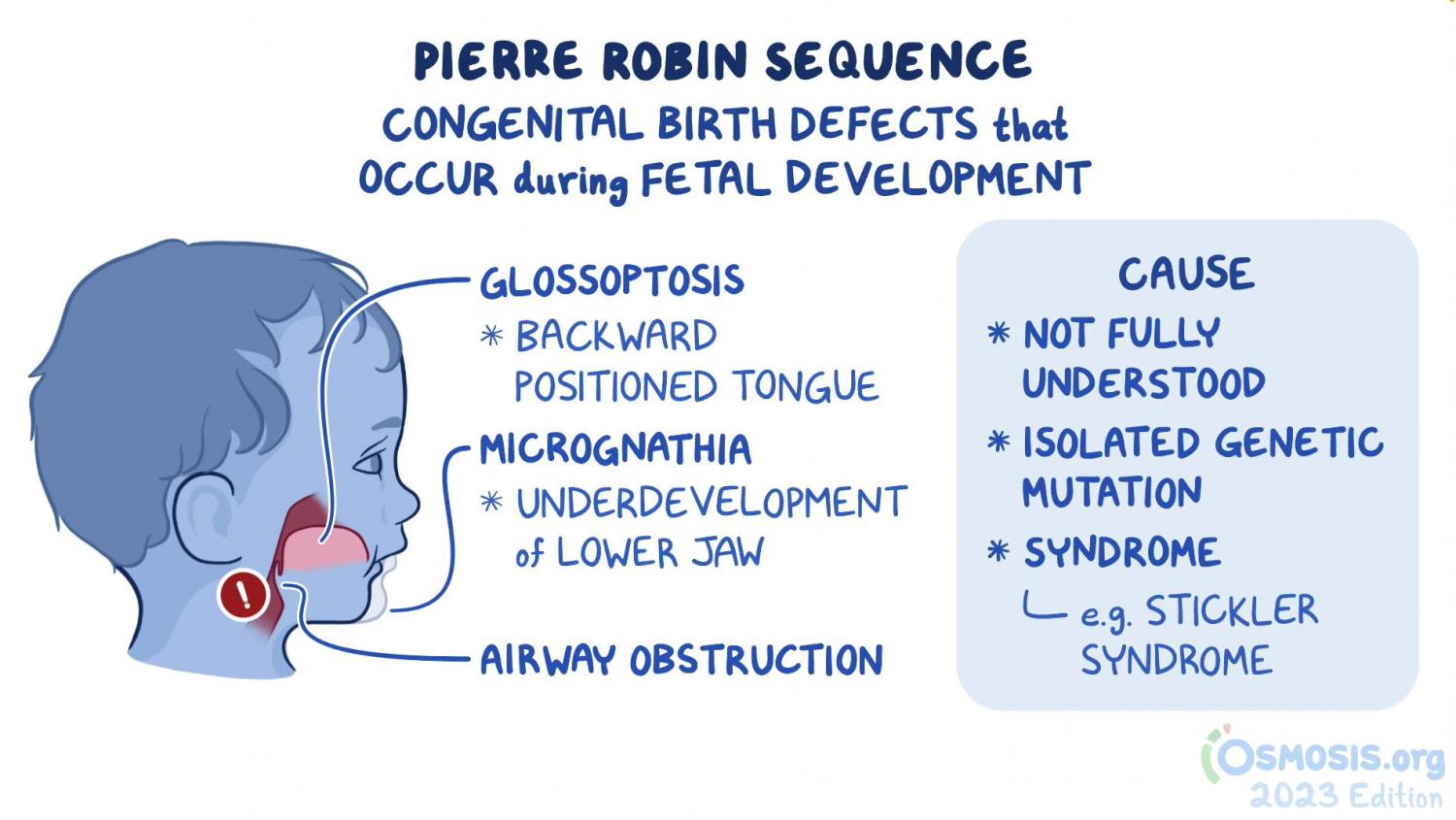
Rare Disease Education PierreRobin Sequence Sustainable Development Goals Resource Centre
Background. Pierre Robin sequence (PRS; also referred to as Pierre Robin malformation, Pierre Robin malformation sequence, Robin sequence, Pierre Robin syndrome, and Pierre Robin anomalad) is a condition consisting of three essential components [ 1, 2] : Micrognathia or retrognathia. Cleft palate (usually U-shaped but sometimes V-shaped)

Pierre Robin Sequence Otolaryngologic Clinics of North America
Find symptoms and other information about Isolated Pierre Robin syndrome.
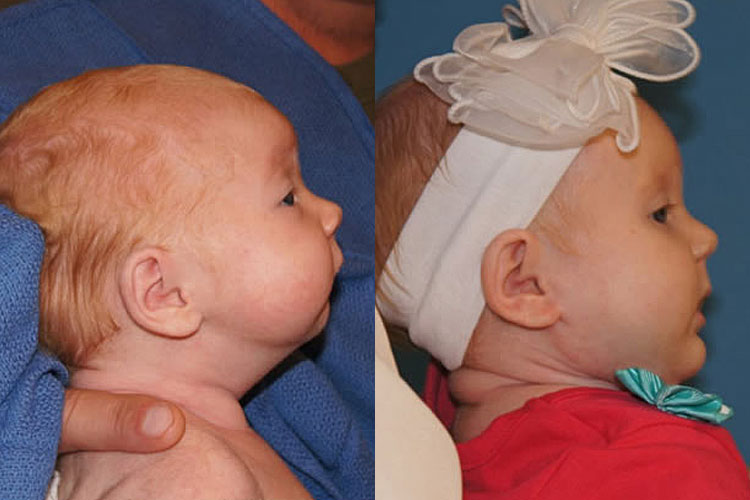
Pierre Robin Syndrome
In 1926, Pierre Robin published the case of an infant with the complete syndrome. Until 1974, the triad was known as Pierre Robin syndrome; however, the term syndrome is now reserved for those errors of morphogenesis with the simultaneous presence of multiple anomalies caused by a single etiology. The term sequence has been introduced to.
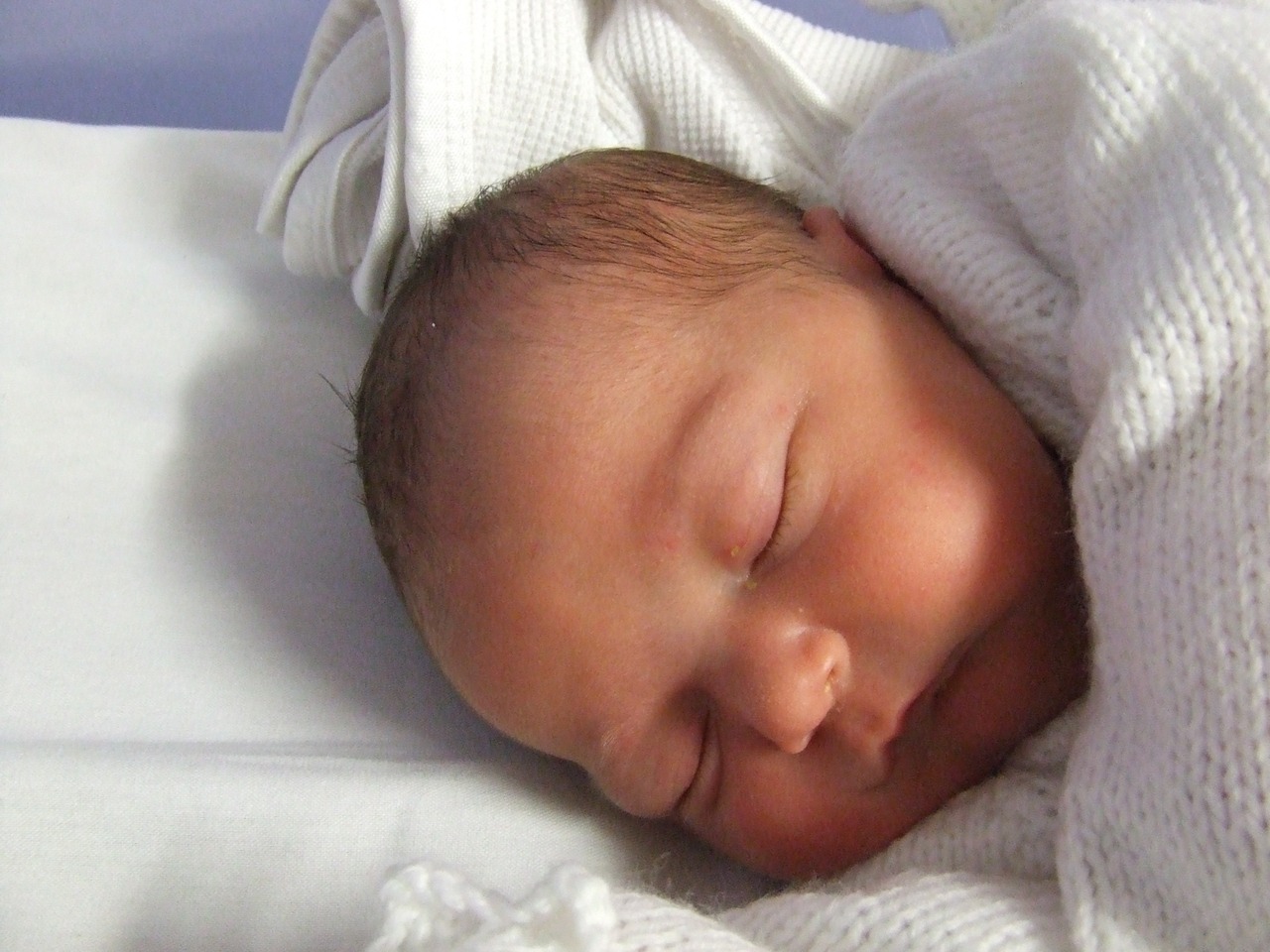
Mediclopaedia — Pierre Robin Syndrome (pronounced RowBAN) Pierre...
Pierre Robin sequence, also known as Pierre Robin complex or syndrome, is a birth defect characterized by a wide, U-shaped cleft palate, a small lower jaw and a tongue that tends to fall back toward the throat, potentially obstructing the airway. Because this combination of features can make it difficult or impossible for a baby with Pierre.
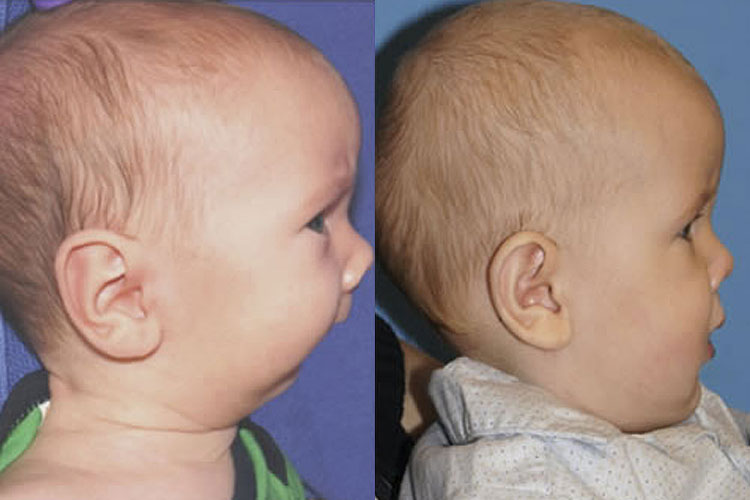
Pierre Robin Syndrome
Pierre Robin syndrome is a congenital condition recently linked to genetic anomalies at chromosomes 2, 11 or 17. Often called Pierre Robin sequence, the disease is a chain of developmental malformations, each leading to the next. The condition is characterized by a smaller-than-normal lower jaw, a tongue that falls back in the throat and airway.

Pierre Robin Sequence, Stickler Syndrome, and Baby Mercy YouTube
The Pierre-Robin sequence (PRS) is a pattern of congenital facial abnormalities comprising micrognathia, glossoptosis, and airway obstruction. Associated spinal pathologies have rarely been reported with PRS. Methods We explore the molecular genetic basis of this association through a systematic review of spinal disease in patients with PRS.

Le syndrome de Pierre Robin " les grands syndromes en ODF" YouTube
Pierre Robin sequence [a] ( / pjɛər rɔːˈbæ̃ /; [3] abbreviated PRS) is a congenital defect observed in humans which is characterized by facial abnormalities.

Pierre Robin Syndrome Cleft and Craniofacial Center Utah
The Robin sequence (also known as Pierre Robin's sequence) is characterized by a small lower jaw at birth that prevents proper feeding of the infant, followed by a retracted or displaced tongue. A high-arched, cleft soft palate is also commonly seen. Affected individuals also have persistent left superior vena cava.

Pierre Robin Syndrome Retina Image Bank
INTRODUCTION. Pierre Robin sequence (PRS), also referred to as Robin sequence, is defined by micrognathia, glossoptosis, and upper airway obstruction and results in varying degrees of airway compromise after birth. 1,2 Both evaluation and treatment of airway obstruction in infants with PRS varies between centers with considerable controversy around the role of polysomnography for the diagnosis.
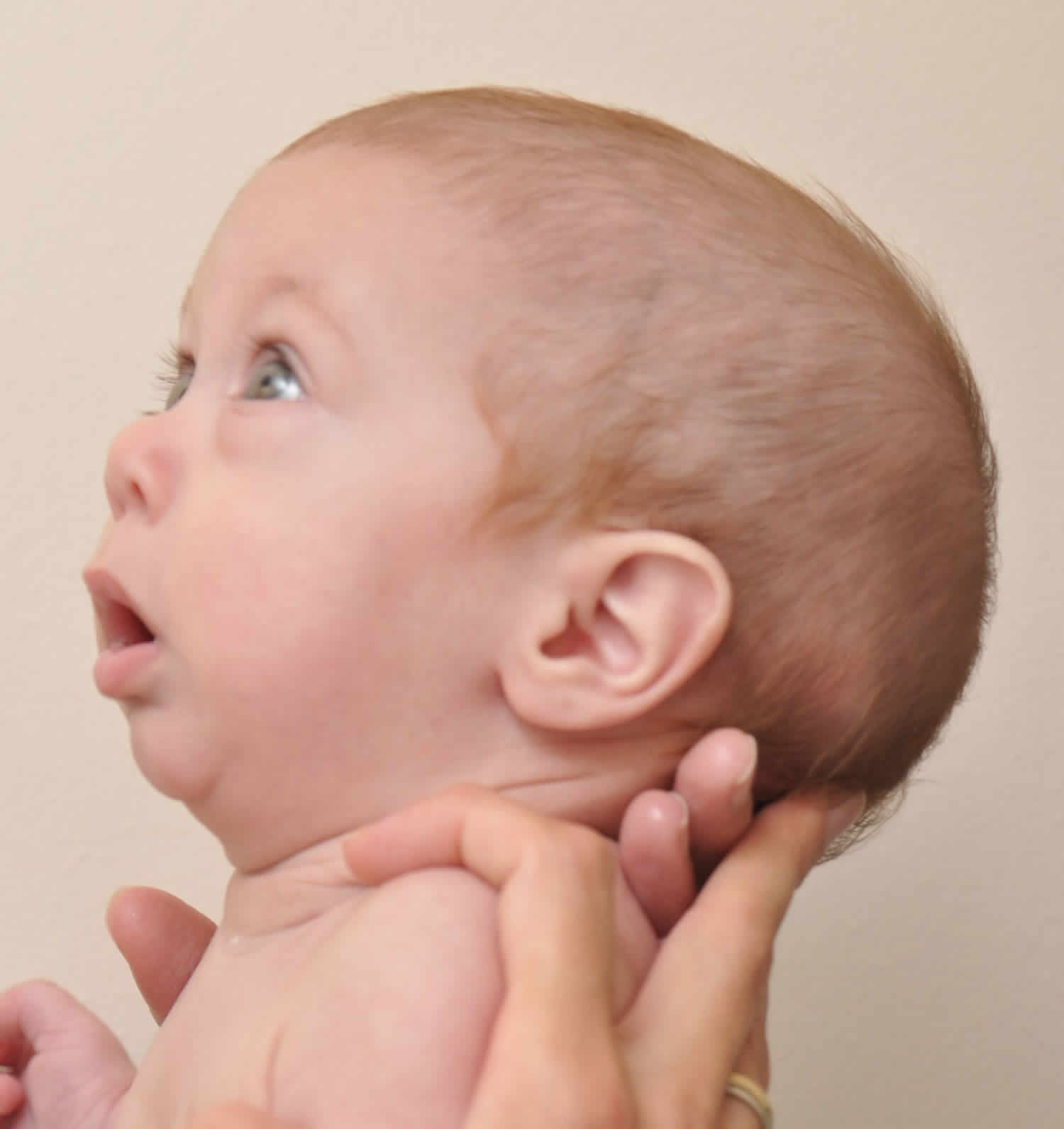
Pierre Robin syndrome causes, symptoms, prognosis and treatment
Pierre Robin syndroom Pierre Robin sequence Glossoptosis, micrognathia and cleft palate Hoe wordt deze ziekte vastgesteld? Dokters kunnen Pierre Robin sequentie vaststellen als een kind de kenmerken heeft die hierboven staan. Soms wordt de aandoening al tijdens de zwangerschap met een echo gezien.

Stickler syndrome a possible presentation of Pierre Robin sequence BMJ Case Reports
The condition is sometimes called Pierre Robin "sequence" because one problem creates others: A jaw that's too small can push the tongue farther back in the mouth than usual. That blocks the baby's airway, causing breathing trouble. Babies with Pierre Robin (pyer roe-BAHN) syndrome may also have a cleft palate because the roof of the.

Pierre Robin sequence appearances and 25 years of experience with an innovative treatment
Summary. Pierre Robin sequence (PRS) is characterized by a small lower jaw (micrognathia) and displacement of the tongue toward the back of the oral cavity (glossoptosis). Some infants also have an abnormal opening in the roof of the mouth (cleft palate). PRS is believed to be caused by multiple contributing factors, which lead to a series of.

Pierre Robin syndrome Dentowesome
Pierre Robin sequence is also known as Pierre Robin syndrome or Pierre Robin malformation. It is a rare congenital birth defect characterized by an underdeveloped jaw, backward displacement of the tongue and upper airway obstruction. Cleft palate is also commonly present in children with Pierre Robin sequence.
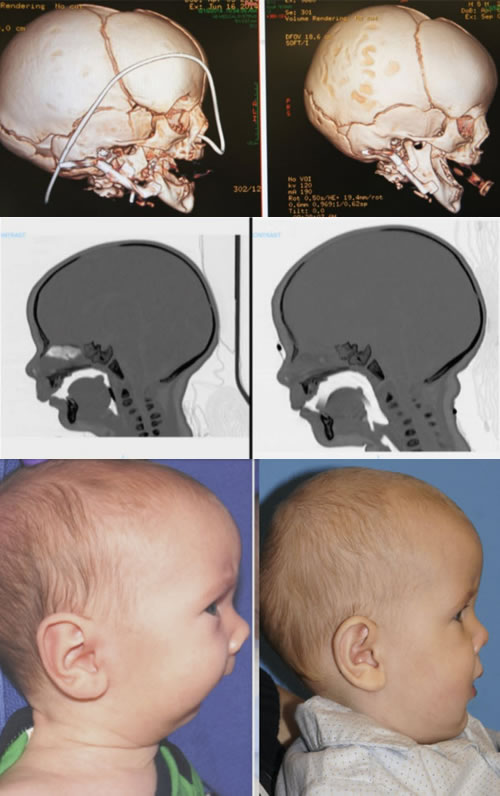
Pierre Robin Syndrome
Pierre Robin sequence is named for the French dental surgeon who first identified and researched this sequence of conditions. (Robin is pronounced Ro-BAHN.) It is also referred to as PRS, Pierre Robin, Robin sequence, Pierre Robin syndrome, and neonatal tongue-based airway obstruction. Pierre Robin affects an estimated one in 8,500 to 14,000.
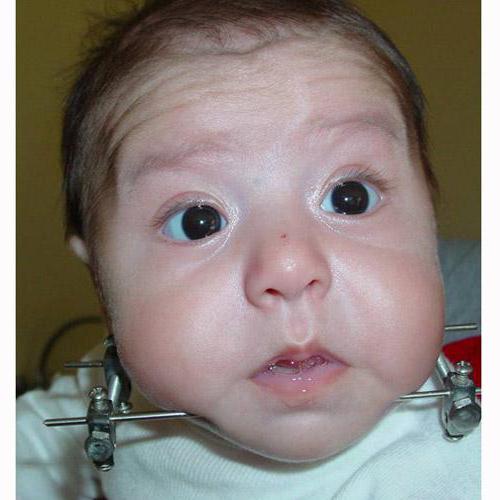
Pierre Robinův syndrom příčiny, léčba, důsledky. Pediatrická maxilofaciální chirurgie
Pierre Robin syndrome/sequence (PRS) is associated with a triad of symptoms that includes micrognathia, cleft palate, and glossoptosis that may lead to respiratory obstruction.. Maas SM, van den Boogaard MJ, van Hagen JM, Breugem CC, et al. Etiology and pathogenesis of robin sequence in a large Dutch cohort. Am J Med Genet A. 2015; 167A ((9.

Pierre Robin syndrome causes, symptoms, prognosis and treatment
pierre robin sequence t his parent's guide to Pierre Robin Sequence is designed to answer questions that are fre-quently asked by parents of a child with Pierre Robin Sequence. It is intended to provide a clearer under - standing of the condition for patients, parents and others. ©2020 Children's Craniofacial Association, Dallas, TX